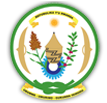Kigali 3rd October, 2016-It is common knowledge that economic development depends on an efficient, effective, comprehensive, and coordinated multimodal transport system that provides choices for the movement of people and goods and allows quick transfers between modes when and where they are needed.
Rwanda has continued to strengthen its infrastructural facilities that are foundation for economic development and improving people’s lives.
In line with vision 2020 transport pillar targets, efforts have been made in construction, rehabilitation and upgrading transport infrastructure. In road transport there was cumulative growth of network of national paved roads, extended to 1,279Km from 1,214km in 2015; 83 km of National paved roads were rehabilitated; 842.8 Kms of National paved roads and 250km National unpaved roads were maintained. Under feeder roads program, 547.13km were constructed making a total of 1507km; this has facilitated market access for rural farmers.
Some of the roads that were rehabilitated and upgraded in the fiscal year 2016/16 include;
· Karongi-Rubengera (17km) completed at 75% end of June 2016;
· Kigali-Gatuna (77.8km) was completed and inaugurated in September, 2016;
· Kitabi Crete-Congo Nil and Huye-Urban roads (36.8 Kms);
· Kivu Belt Lot 4&5 (66km);
· Kivu Belt Lot 7 (48km);
· CIMERWA-Bugarama (9Kms);
· Access road to Bushenge Hospital (3Kms);
· Musanze_ Nyakinama (9km) is completed at 75%.
· Kigali (78.01Kms), Musanze (5Kms), Rubavu (5.4Kms) and Gicumbi (4Kms) urban roads.
In Air transport, Kigali International airport has been upgraded with construction of a new Apron, terminal and land side facilities and installation of the state of the art bird collision avoidance system. This has doubled the airport passenger handling capacity and facilitated landing and takeoff simultaneously, thus reducing waiting time. Kamembe runway has been resurfaced and the airport structures rehabilitated to match regional air transport requirements. In a bid to meet Rwanda’s vision of becoming the regional Air Transport Hub, the construction of new Bugesera International Airport has been initiated. Project Development Agreement has been signed with potential investor and works are expected to commence early 2017.
Rwanda has signed different bilateral air services agreements (BASAs) which have enabled RwandAir to expand its destinations and increase fleet.
In the fiscal year 2016/17, four new aircrafts will be acquired and RwandAir will increase its connectivity to Africa, Asia, Europe and beyond. Efforts to engage Partner States in the development of Standard Gauge Railway through Northern and Central Corridors will continue.
To streamline rural public transport, ONATRACOM was restructured leading to creation of Rwanda Interlink Transport Company (RITCO) in partnership with private sector. In the new arrangement, a total of 163 buses with carrier capacity of 9,600 passengers will be procured starting with 50 buses (20 VIP and 30 Economy Class) expected to be delivered in December, 2016. The fleet will continue to expand as per the passenger demands.
On the regional transport initiatives, One stop border posts (OSBPS) were constructured suchas, Rusumo One Stop Border Post (OSBP) and International Bridge that was inaugurated on 6th April 2016 and Kagitumba OSBP commissioned. Other two OSBP at Gatuna and Rubavu are under construction, Cyanika OSBP, parking and cross border market construction to commence by fiscal year 2016/17.
OSBPs in the country have helped to reduce transit costs incurred in cross-border movement by combining the activities of both country’s border organizations and agencies at either a single common location or at a single location in either direction without increasing risk to public safety or revenue collection.

 ENGL
ENGL KINY
KINY